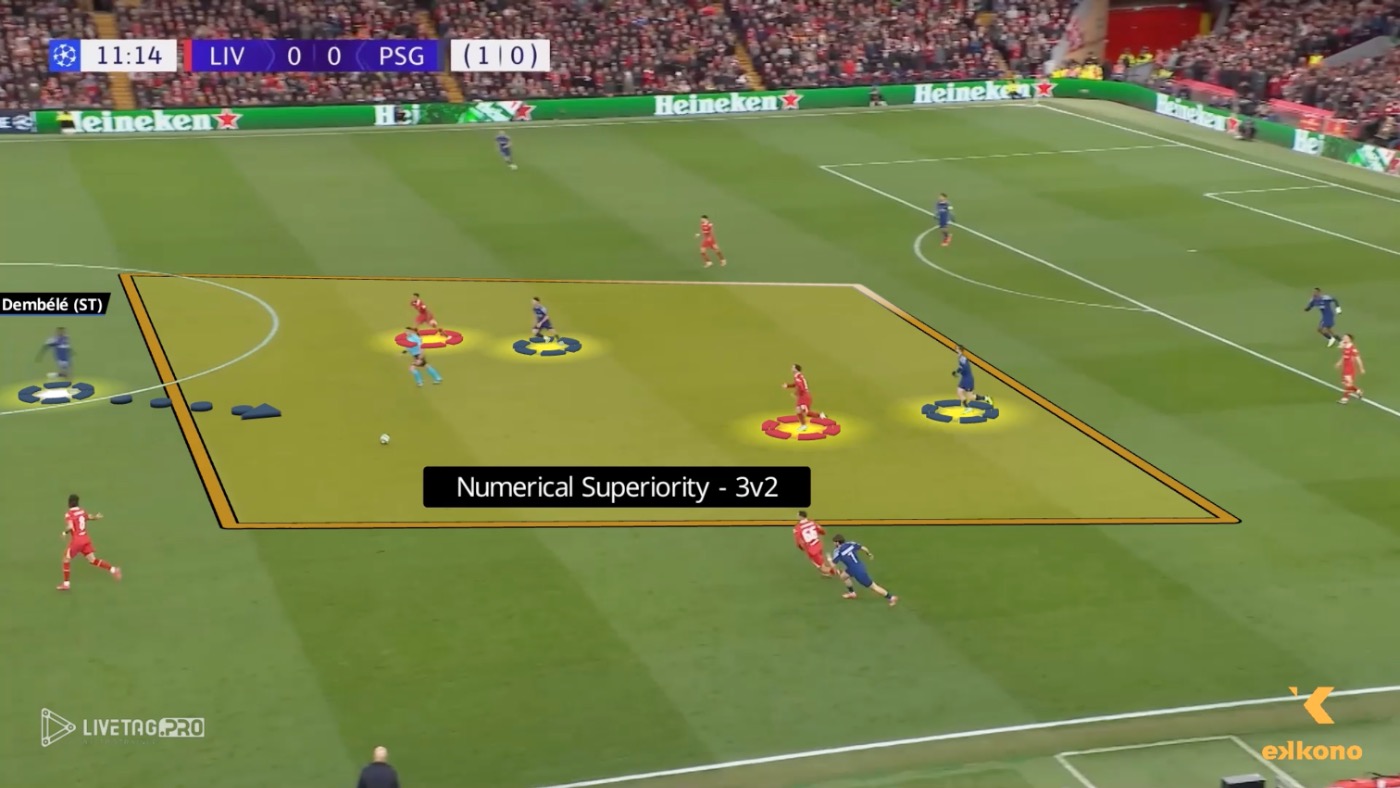
Introduction
Since joining Paris Saint-Germain in the summer of 2023, Ousmane Dembélé has undergone a major tactical transformation under Luis Enrique—a process that culminated in him winning the 2025 Ballon d’Or after registering 35 goals and 16 assists in 53 matches. No longer just a traditional winger known for his pace and dribbling, as he was during his time at FC Barcelona under Xavi Hernández and other coaches, the French international has evolved into a far more complete and functional player within PSG’s collective structure. This article analyzes Dembélé’s new role and the tactical evolution that shaped him into the world’s best player in 2025.
Systemic Context: Luis Enrique’s Offensive Model
Luis Enrique operates with a base 1-4-3-3 system, which evolves into a 1-3-2-2-3 structure during sustained attacking phases. His offensive model is characterized by:
- High positional occupation from the wingers
- Inverted full-backs (especially Hakimi)
- Patient circulation aimed at unbalancing the opponent through width and changes of rhythm
- Attracting pressure to one side in order to progress through the weak side
Within this structure, Dembélé plays a crucial role in both creation and final-third disruption. His influence now begins as early as the build-up phase, making him a multi-phase contributor. Learn more about the PSG’s game model under Luis Enrique here.
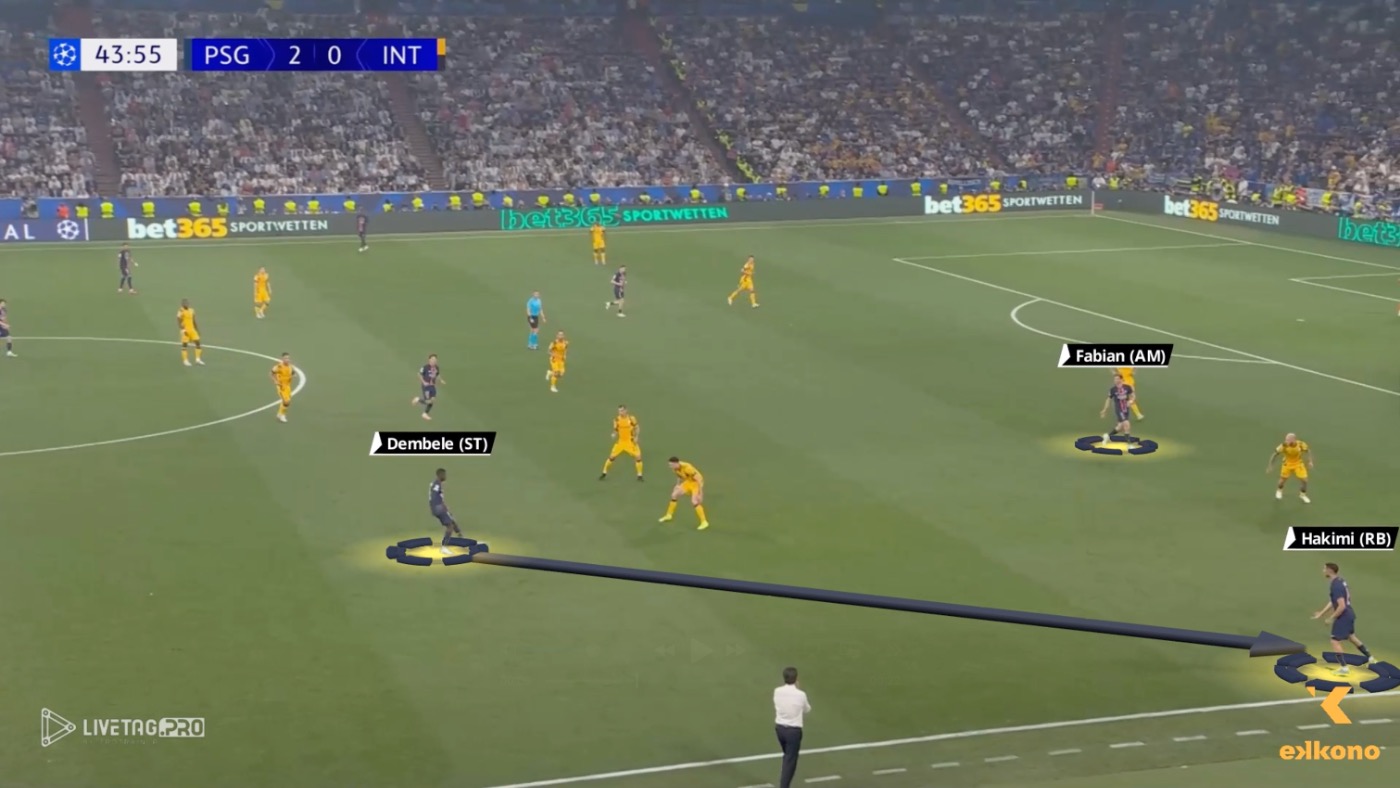
Systemic Context: Luis Enrique’s Offensive Model 1
Positional rotation: Dembélé drops as AM, Fabián (AM) adds depth as striker, Hakimi (RB) provides width.
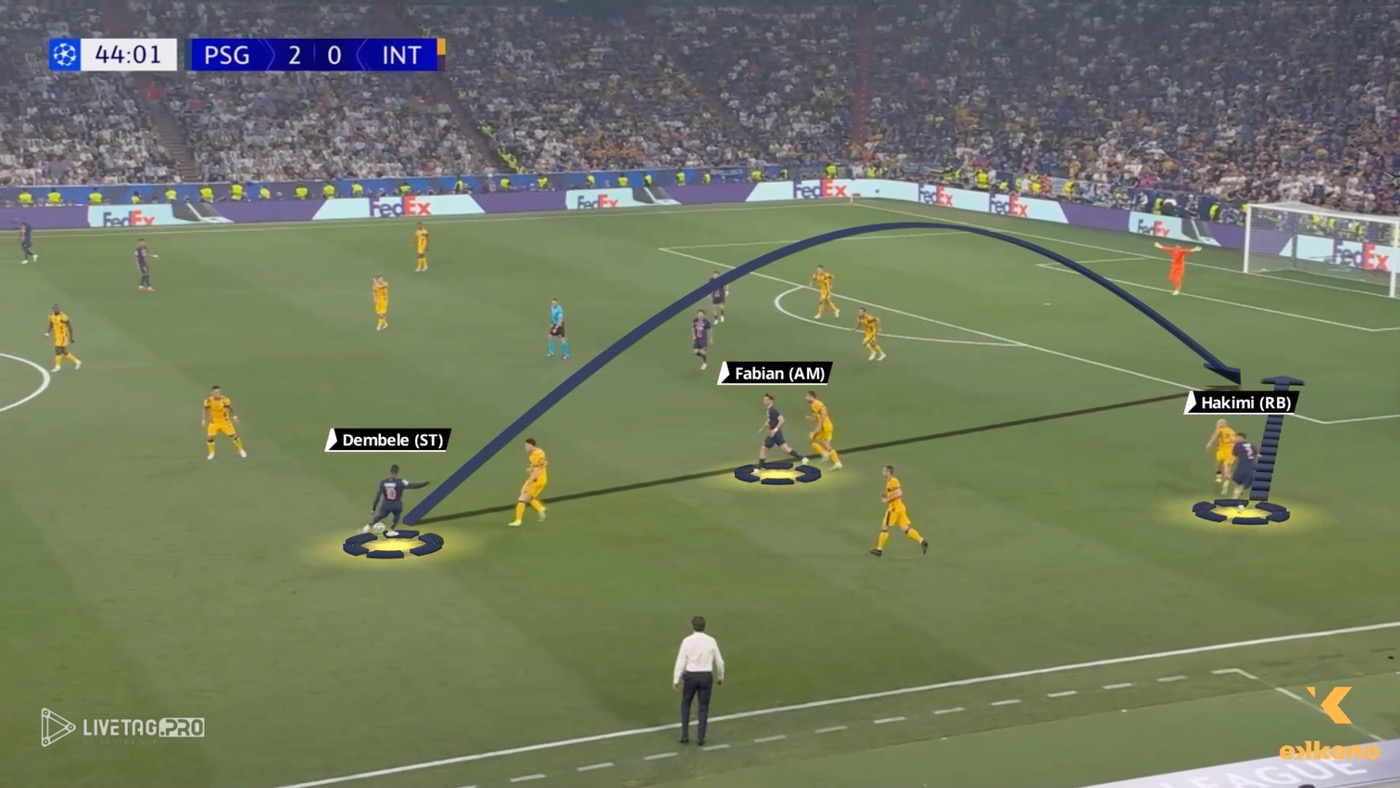
Systemic Context: Luis Enrique’s Offensive Model 2
The episode ends with Dembélé playing a pass to Hakimi, who attacks the space behind the defensive line.
Dembélé’s Technical-Tactical Profile
- Two-footed dominance: Dembélé’s ability to dribble, pass, and shoot effectively with both feet makes him highly unpredictable in 1v1 situations and extremely versatile in combination play. In his new, more central role, this ambidexterity becomes even more influential, allowing him to exploit spaces on either side, disguise his intentions, and disrupt defensive structures.
- Spatial awareness: He has improved significantly in reading and attacking the half spaces, particularly between the opponent’s full-back and central midfielder.
- Ability to pin opponents: His constant threat forces his direct opponent to maintain horizontal defensive width, which opens up central channels for PSG to exploit.
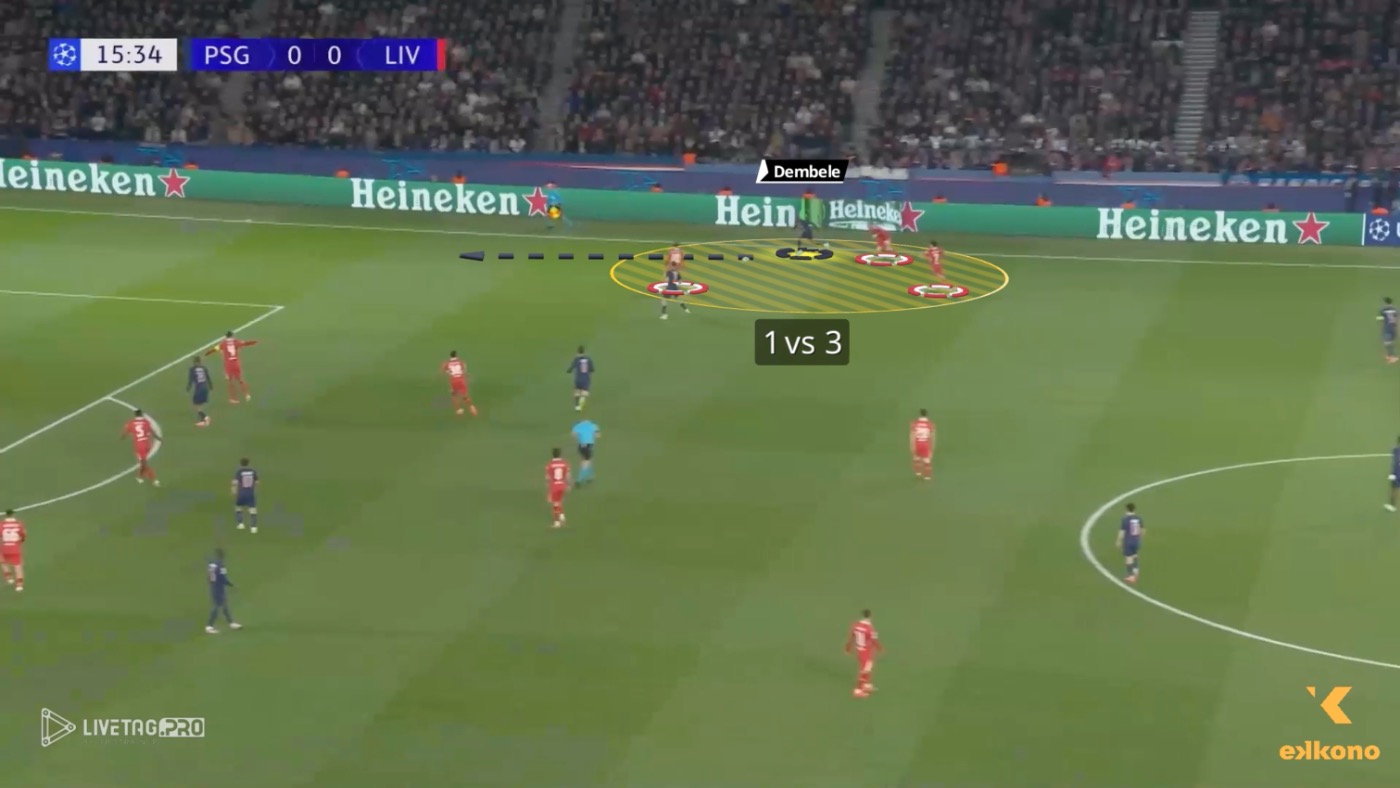
Dembélé’s Technical-Tactical Profile 1
Dembélé pins three opponents and surpasses them using his two-footed dominance.
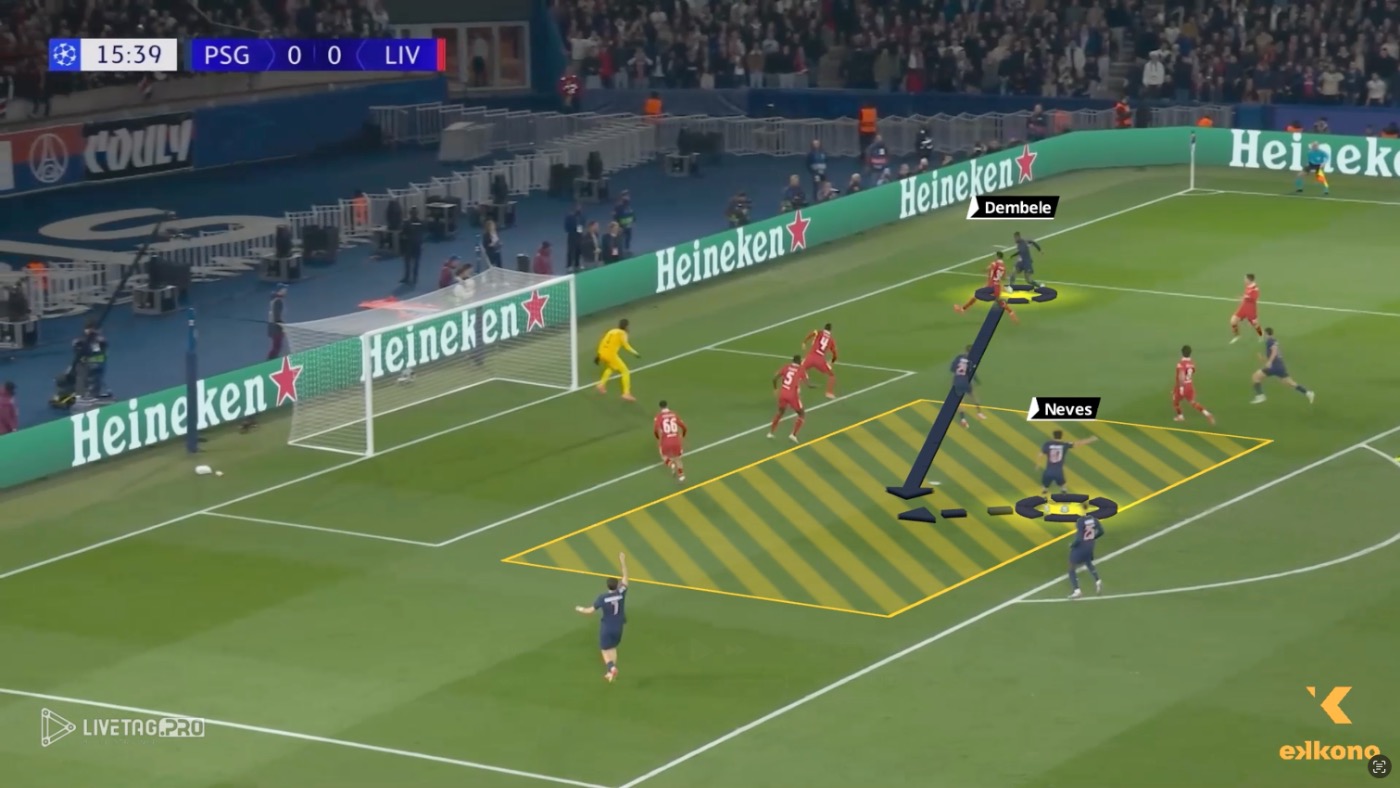
Dembélé’s Technical-Tactical Profile 2
After surpassing them, Dembélé delivers a precise pass to Neves in the penalty area.
Dembélé’s New Functional Role
Inside-Winger Function
Dembélé no longer plays strictly on the touchline as he did in his earlier career. Starting from the right, he now tends to drift inside and operate between the lines:
- He positions himself between the opposition’s left-back and left central midfielder.
- This creates numerical superiority in the central lane, especially when Hakimi overlaps and Vitinha or Fabián operates inside.
- Against mid-blocks, Dembélé acts like a wide playmaker, able to turn and penetrate or attract pressure to release a third man.
Advantage Creator Through Pinning and Imbalance
Luis Enrique’s instructions go beyond asking Dembélé to finish plays—his primary role is to generate advantages:
- He draws double teams on the wing, creating space for the nearby advanced midfielder or the striker to exploit.
- During transitions, he positions himself more centrally, allowing him to receive while facing forward and attack space in ball-carrying actions.
Link in the Final Third
In positional attacks in the opposition half:
- He often operates on the same line as the advanced midfielders but with more freedom.
- He occasionally acts as a deep playmaker, delivering diagonal passes to the opposite winger or through balls for overlapping full-backs.
- Against low blocks, he contributes to short-passing combinations near the box, often linking up with the striker or midfielders.
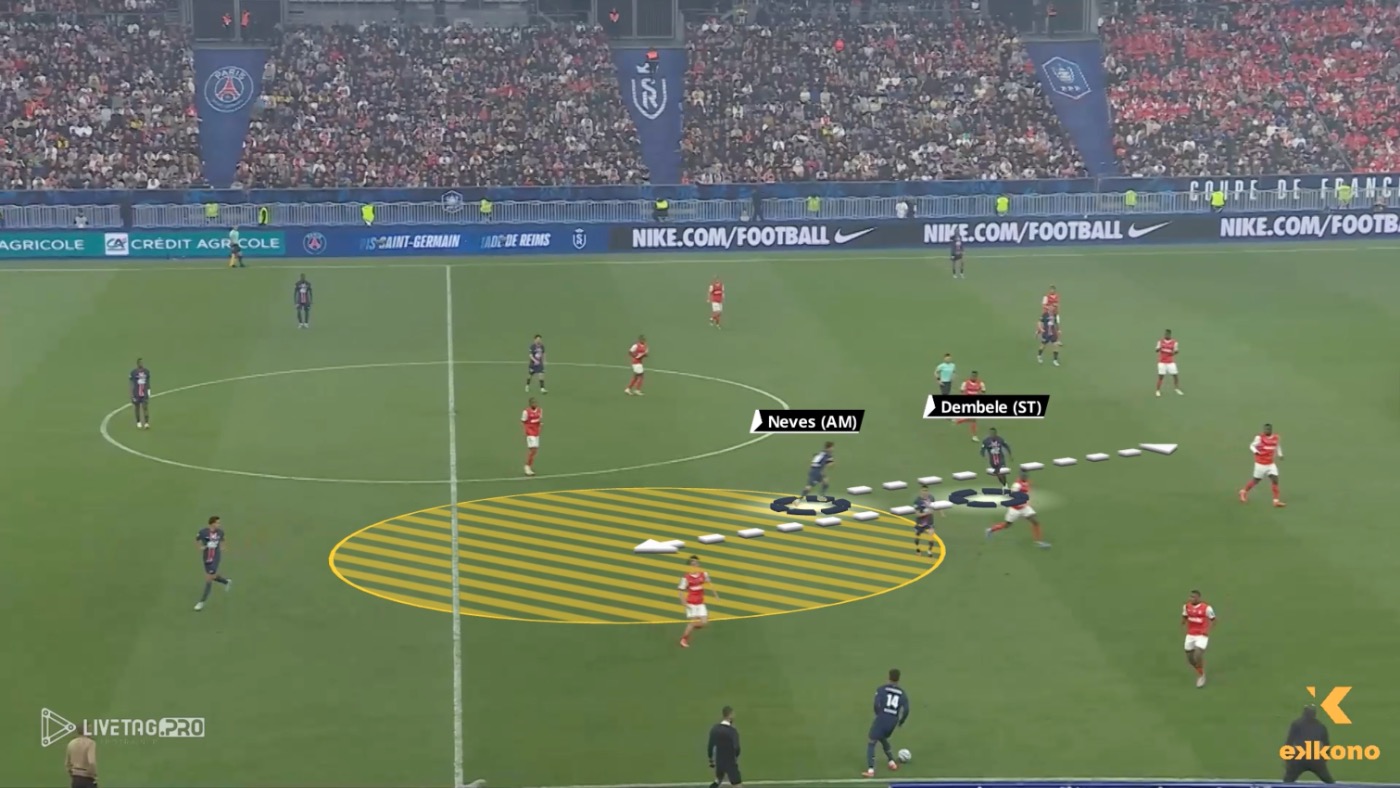
A New Functional Role 1
Dembélé (ST) drops back into the advanced midfielder role, switching positions with Neves (AM).
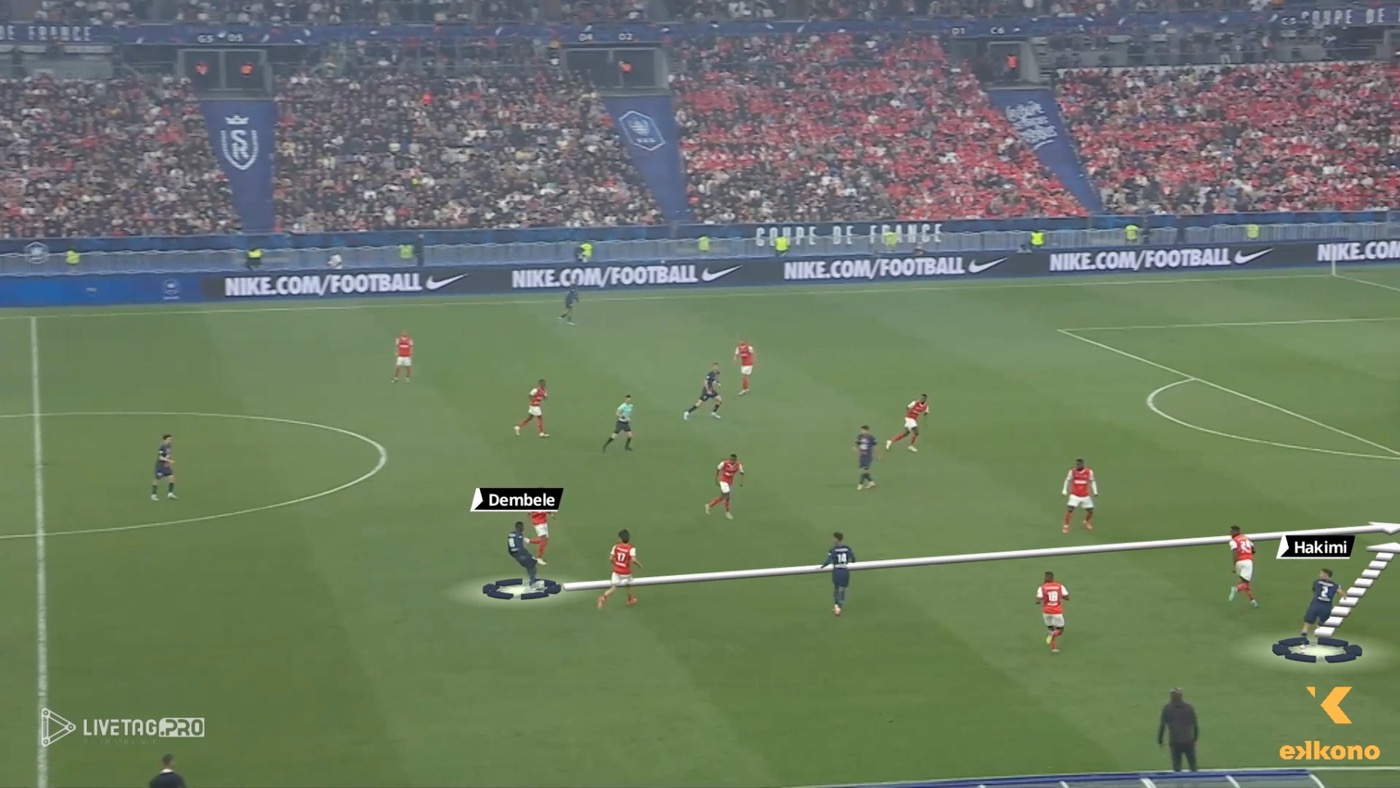
A New Functional Role 2
Then he plays a perfect pass to Hakimi, breaking through all defensive lines.
Dembélé as a False Nine Role: Inner Forward Movements
Although Dembélé used to start as a right winger, he has adopted characteristics of a false nine in advanced attacking phases. His movement and positioning increasingly resemble that of an interior forward rather than a wide attacker.
Key Traits of Dembélé as a False Nine
- Constant movement between lines: He positions himself between the opponent’s defensive midfielders and center-backs, receiving in pockets where he can turn and combine.
- Diagonal runs and midfield drops: Rather than staying high, he drops into midfield or makes diagonal runs, pulling defenders with him and opening up space for other teammates.
- Progression through ball-carrying: With the ball at his feet, he can drive through defensive structures using his speed and control.
- Numerical superiority between lines: His interior presence increases PSG’s options in central areas and improves their ability to dominate in key zones.
Tactical Advantages of the False Nine Role
- Disrupting center-backs: His movement forces defenders to decide whether to follow him or hold their line, often creating space for midfielders or wide players to exploit.
- Space creation for Hakimi: By occupying central zones, he opens up the right flank for Hakimi to attack with less resistance.
- Attacking variability: The opposition must adapt to a wide range of possible passes—between the lines, wide, or toward a central forward.
- Improved attacking fluidity: Dembélé serves as a connective axis between lines, facilitating quick circulation and rhythm changes in the final third.
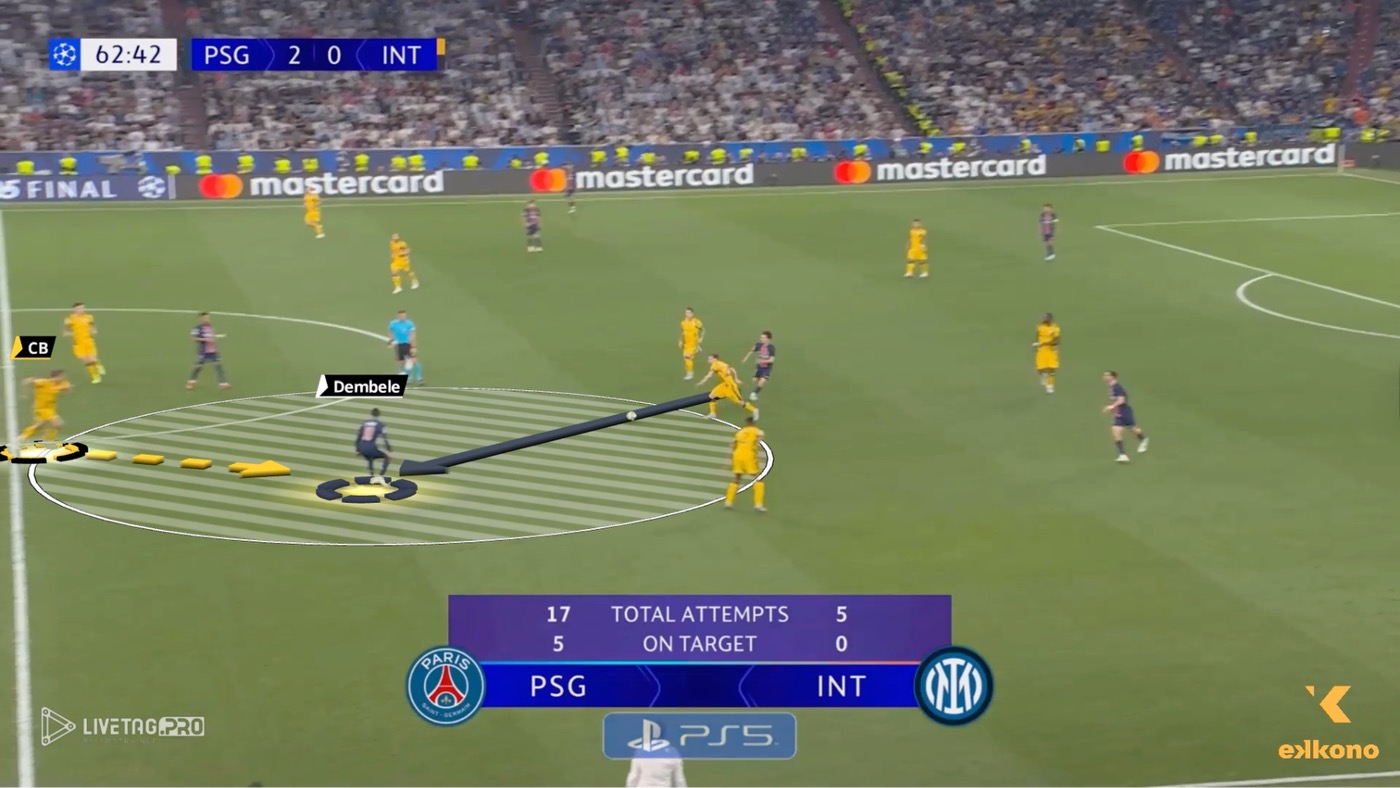
False Nine Role: Inner Forward Movements
Dembélé drops back as a false 9 and forces the center-back to leave his position and follow him.
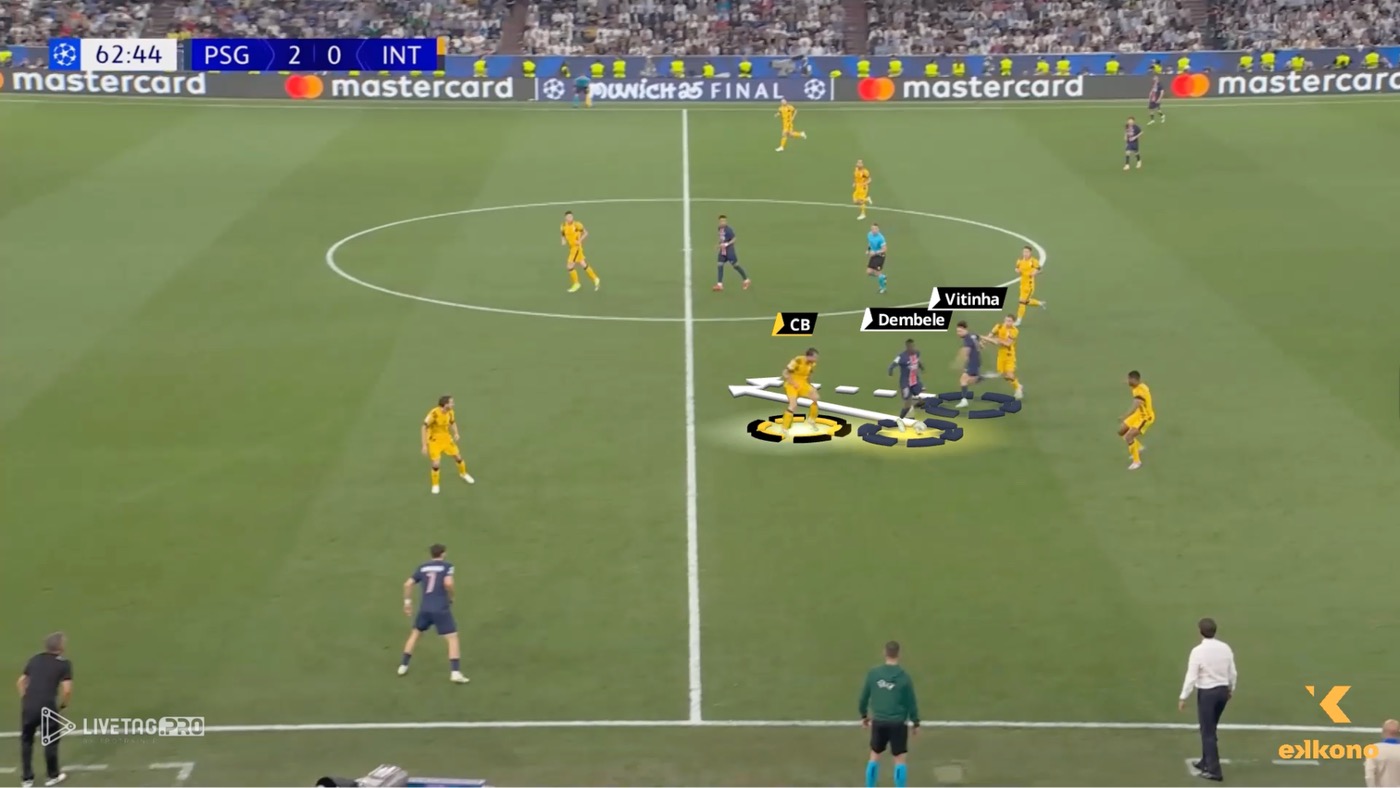
False Nine Role: Inner Forward Movements 2
After attracting his direct opponent, he delivers an intelligent pass with the heel, creating a numerical advantage in the final third.
Conclusion
Ousmane Dembélé’s new role at PSG under Luis Enrique goes far beyond the classic profile of a winger who breaks lines. He has become a tactically versatile piece—functioning as an interiorized forward, advantage generator, and central connector. His evolution reflects PSG’s shift toward a more associative, structured, and dynamic style of play, where individual brilliance is integrated into a collective framework based on superiority, spatial occupation, and coordinated movement.
Crowned the best player in the world with the 2025 Ballon d’Or, Dembélé no longer simply breaks defenses—he disorganizes them through tactical intelligence, positional mastery, and game-reading ability. His transformation stands as a reference for the modern attacker: unpredictable, adaptable, and decisively embedded in the team’s collective logic.

